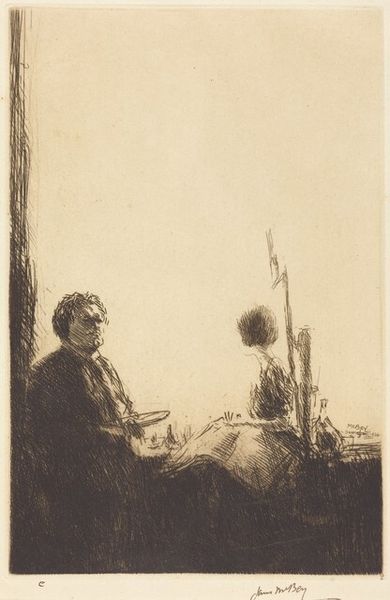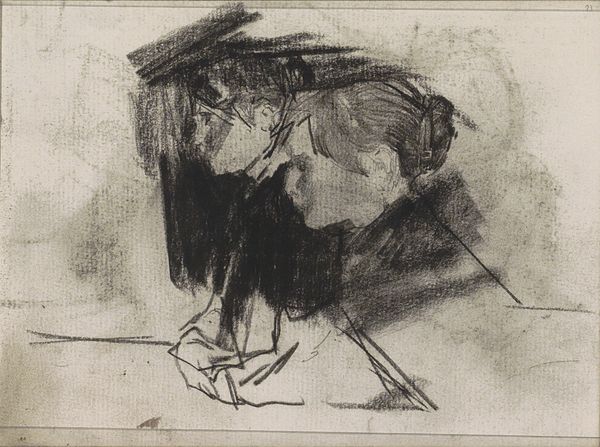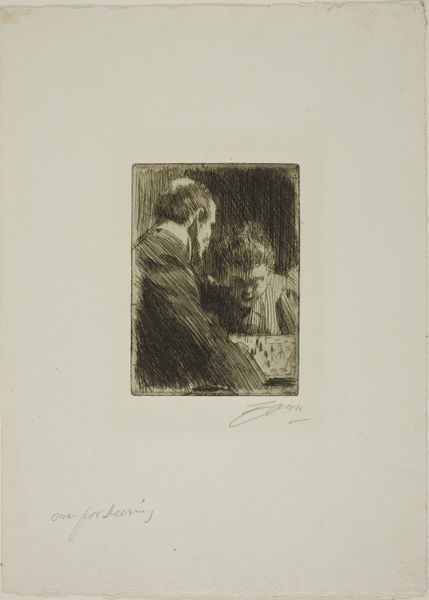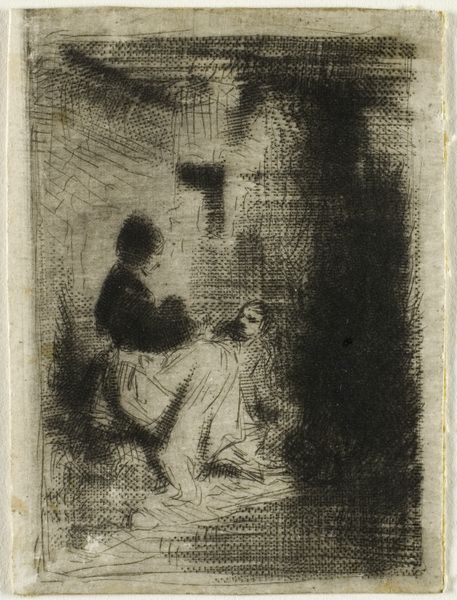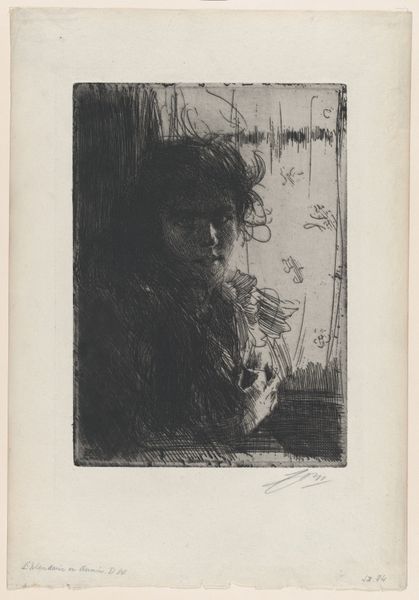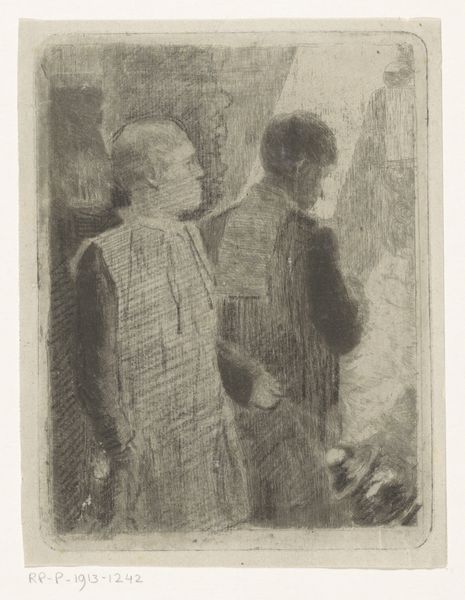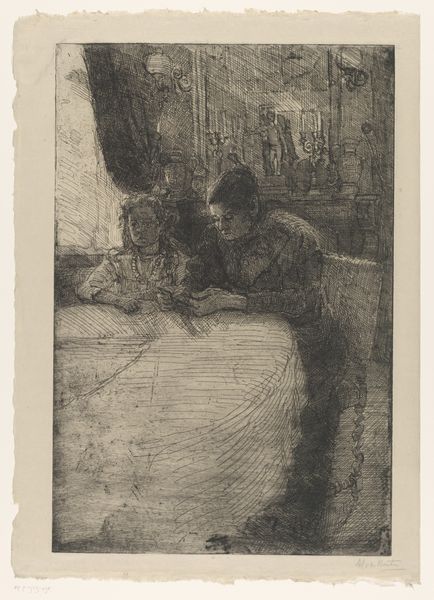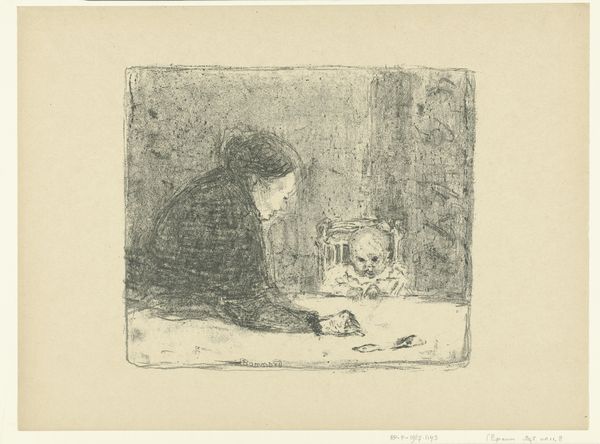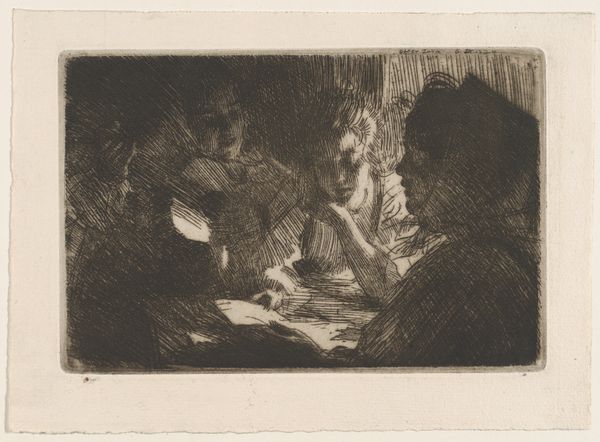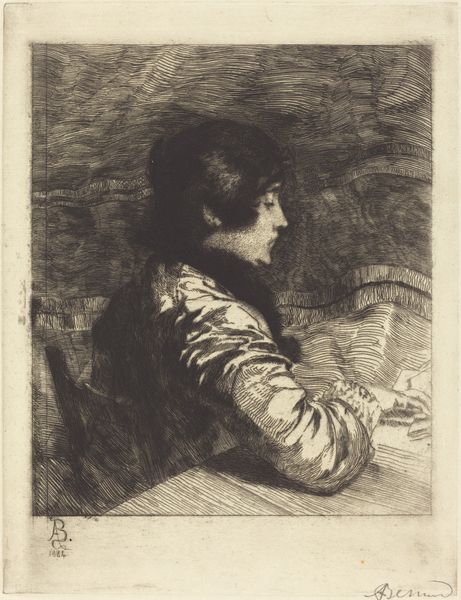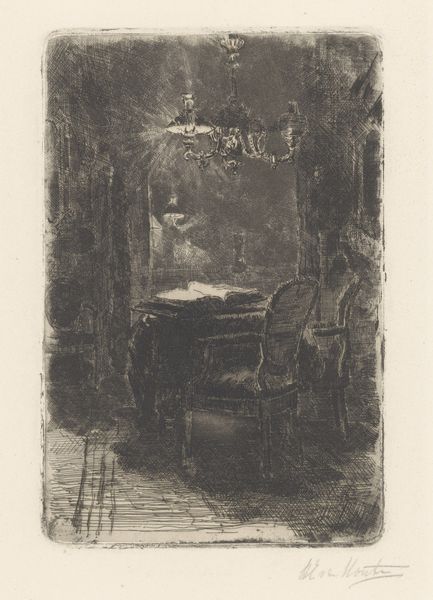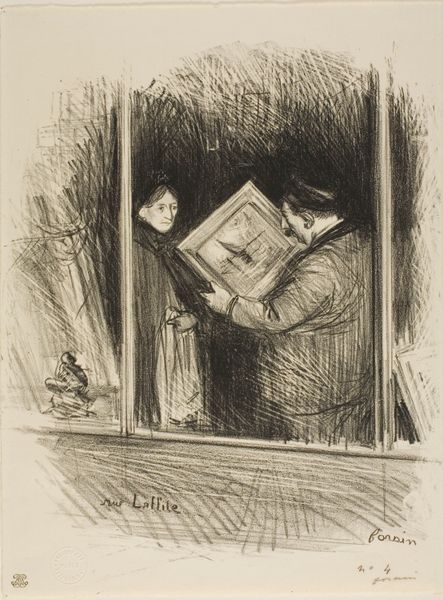
drawing, lithograph, print, paper
#
pencil drawn
#
drawing
#
amateur sketch
#
light pencil work
#
lithograph
# print
#
pencil sketch
#
incomplete sketchy
#
charcoal drawing
#
possibly oil pastel
#
paper
#
charcoal art
#
pencil drawing
#
france
#
charcoal
Dimensions: 313 × 256 mm (image/stone); 329 × 258 mm (sheet)
Copyright: Public Domain
Curator: Félix Buhot’s 1892 lithograph, "Child Drawing (Jean Buhot)", offers us an intimate glimpse into domestic life. What's your initial reaction to it? Editor: A poignant observation! It's raw, full of the fleeting nature of childhood. All those almost ghostly figures surrounding the central image of the young boy create an uncanny, dreamlike feeling. It speaks volumes about the textures of time. Curator: Yes, it’s interesting you bring up time. Lithography allows for incredible layering. Notice the ways Buhot used different tones of charcoal and varied pressure to conjure atmosphere. You can almost smell the paper. Editor: And consider paper as material—so often, particularly then, rags! Paper was the detritus of lived lives, processed, pulped, pressed, a silent witness. Buhot transforms this base material into something incredibly evocative, even dignified. Curator: That resonates, the dignity. This piece, like all of Buhot’s work, possesses a certain poetic sadness. I see Buhot as a kind of documentarian of the everyday, lifting it up, almost giving it permission to exist beyond its moment. It also feels very human because of those flaws, like the incomplete rendering on the lower section. Editor: But "incomplete" suggests a failure of sorts, doesn’t it? The looseness, the suggestive rather than prescriptive detail – I think it's vital. The rough lines actually bring us closer to the process, the physical labor, revealing artmaking not as divine inspiration but dedicated craft. Curator: True, true, not the divine right of artists but rather the human mark-making that tells its own kind of story...almost palimpsestic, wouldn’t you say? You sense there is an art "beneath" that the top image alludes to and that Buhot seems willing to leave unfinished. The material tells a kind of a ghost story. Editor: Absolutely. And think of the tools! The greasy crayon or tusche, the press, the labor involved in printing each one individually—the subtle variations and accidents involved...it democratizes the artwork by revealing the messy hand behind it. It breaks down some art world hierarchy. Curator: A ghost indeed. Seeing Buhot's child now I wonder about what lies beneath our current digital slickness, what ghosts will cling to our pixels, to our perfectly produced, frictionless surfaces. Editor: Right—the contrast! In the age of perfect reproductions, Buhot reminds us of the power in imperfection.
Comments
No comments
Be the first to comment and join the conversation on the ultimate creative platform.

